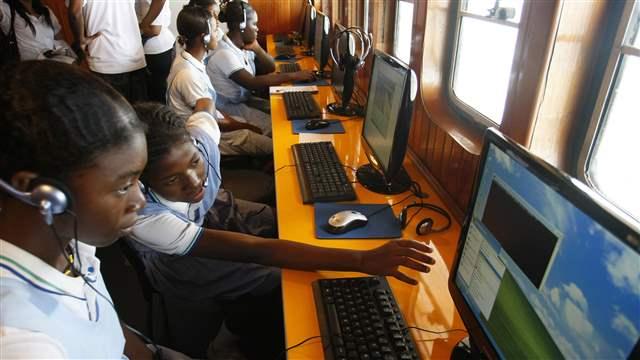There are several often overlapping hypotheses of what strategies are best to improve conditions in struggling, low-income neighborhoods. One is that the condition of each individual must be in the context of the whole household, rather than as “children” or “parents” whose situations need to be addressed separately. For this reason there has been increasing attention to “two-generation” strategies.[1] Another hypothesis is that focusing on a particular community and coordinating services within it – a “place-conscious” or “place-specific” approach – will lead to better results than applying services separately to households.[2]
A third hypothesis, often building on the first two, is that certain institutions in the community can act as “nerve centers” or “hubs” and further increase the focus and impact of coordinated services. Historically, the African-American church has performed such a hub role in many communities. More recently, there has been a growing interest in the potential of other institutions, such as housing associations, health clinics and schools as hubs. The Harlem Children’s Zone (HCZ), for instance, has drawn attention with its education “pipeline”—centered on its own charter schools and reinforced with wraparound social services. The community schools approach is also based on the belief that schools can be the focal point of community improvement, not just institutions of learning. The idea is that strategies designed to create the best learning environment with students “ready to learn” can radiate out from the school into the wider community and then back into the schools. These mutually reinforcing efforts are said to improve the neighborhood’s educational attainment and its physical and social health, and increase the prospects for upward economic mobility.
This third hypothesis does have its skeptics. The impact of HCZ’s wrap-around services and community interventions, for instance, has been disputed as a significant factor in children’s educational outcomes.[3] Others argue that long-term impacts are often not identified in test scores, and that educational and social effects are not easily separated.[4] This in turn has triggered a debate about Promise Neighborhoods, which are an attempt to replicate HCZ on a national level.
Whether and how school-based hubs might help achieve healthy neighborhoods is an important topic of inquiry in our efforts to turn around low-income communities. There is a growing number of school-based hubs projects and interest in measuring their effectiveness and replicating those that seem successful. But assessing their impact is a difficult task. Often systematic data is not available to confirm the apparent results, and experimental and quasi-experimental evidence is limited. In these projects the data is rarely adequate to isolate the specific aspects of the integrative program that might be driving the outcomes. Moreover, many interesting approaches essentially lie undiscovered, either because organizations do not have the internal capacity to analyze the data to the degree needed for systematic evaluations, or researchers have not yet examined them. So there needs to be a better inventory of hubs, and at least an initial analysis of examples that seem particularly noteworthy, in order for us to be able to develop a clearer picture of their impact.
As a step in that direction for one such promising hub, this paper provides an overview and initial examination of Briya Public Charter School and Mary’s Center in Washington, D.C. This is an interesting case study, among other reasons, because it combines school education services for young children – and also their parents – with a sophisticated health clinic for the entire family and a range of social services in strong partnership with public and private agencies throughout the city. In two of its sites, the clinic and school occupy the same building.
The education and health performance data available strongly suggest that Briya/Mary’s Center is having a significant and positive impact on the families it serves. But as the paper will indicate, like so many other examples, Briya/Mary’s Center not only faces a number of obstacles in pursuing and expanding its approach but also faces challenges in obtaining the resources and building capacity in data collection for rigorous evaluations that would enable analysts to understand its impact and replicate the model.
Among these challenges:
- It is difficult for such organizations to attract support for evaluation. Donors typically prefer to fund services rather than analysis. Yet adequate investment by private and public sources in data collection, analysis, and empirical evaluation is needed for us to measure the effectiveness of hubs like Briya/Mary’s Center. An empirical evaluation, in the form of a mixed-methods research design — combining both qualitative and quantitative methodologies — is the most useful for capturing the many layers at work in these integrative models.
- Innovative organizations collect and utilize data primarily to guide their operations and improve services and procedures. Those services and procedures change as part of the innovative process, based in part on data, although the data organizations need for operational decisions is often different from that needed for formal evaluations. Formal evaluation is the gold standard for measuring the impact of programs, but organizations need flexibility to experiment with new programs, and to grow their existing programs in a way that is not constrained by the rigid structure of formal evaluations.
- To demonstrate the impact of such hubs, the hubs themselves as well as evaluators need to have greater access to longitudinal data and the capacity to analyze it. The belief of organizations like Briya/Mary’s Center is that their investment in young children and their parents will pay off in the long-term, in several different ways. Longitudinal data and studies are needed to evaluate that proposition.
[1] Moore, Caal, Carney, et al, Child Trends (2014).
[2] Turner, Pastor, The Urban Institute (2010).
[3] Fryer, Dobbie (2011),Fryer, Dobbie (2014); Whitehurst, Croft (2010).
[4] Canada (2010).




